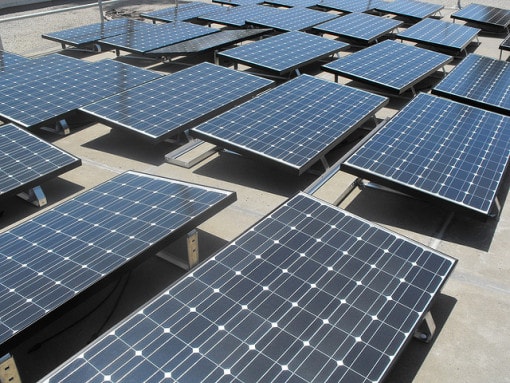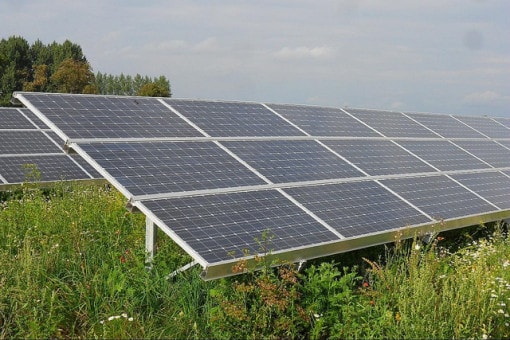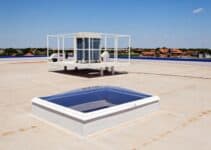Solar panels are fast becoming a very attractive renewable energy option, which could end up being incredibly beneficial to the environment. The process of converting sunlight to electrical energy is one that has improved dramatically over the last few decades, and is now more efficient than ever. The use of solar energy has been around for years in small devices such as calculators, but now many are talking about powering houses and businesses off of these panels.
Solar is one of the most promising renewable energy sources currently available, due to the fact that solar power is abundant. The rays that emanate from the sun can produce nearly 1,000 watts of energy for every square meter of the earth’s surface. By collecting that energy, we would never have to rely upon damaging fossil fuels again. A solar PV system uses sunlight to generate electricity which you can use to power your home or office that can reduce your carbon footprint and impact on the environment.
Solar energy is created using the energy which has been generated by the sun. A solar power panel is able to function using the solar energy which is derived from the sun. Every solar power panel contains many different silicon cells or solar cells. They are building blocks of solar panels. The energy from the sun is absorbed by these solar cells. The solar energy derived from the sun is converted into electricity with the help of a solar power panel.
For this reason, it is important to understand exactly how solar panels work, and how they can be used to produce electricity for the average home.
1. The solar panels installed on the rooftops absorb sun’s light (photons) from the sun.
2. The silicon and the conductors in the panel convert the sunlight into Direct Current (DC) electricity which then flow into the inverter.
3. The inverter then converts DC to AC (alternating current) electrical power which you can use at your home.
4. Excess electricity that is not used by you can be fed back to the grid.
5. When your solar panels produce less power than what is required by you at home, you can always buy electricity from the utility.
The Process of Converting Solar Power to Electricity
- Solar panels use a special process of converting photons to electrons to generate a current by making use of a special type of cell known as a photovoltaic cell. These cells are commonly found on the front of calculators and small gadgets. When a bank of them are connected together, they are collectively known as a solar panel.
- Photovoltaic cells are made up of semi conductive materials such as silicon. The semiconductor absorbs the light from the sun. When this happens, the photons in the sunlight knock some of the electrons in the semi conductive material loose which allows them to flow in an electrical current.
- Within each cell, there is an electric field which is used to streamline this flow of electrons in a particular direction. When these electrons meet a metal contact placed on the photovoltaic cell, it can be used to power devices.
The Use Of Silicon
- Silicon is made up in a crystalline form, with each atom of silicon holding fourteen electrons in a specialized setup of three different shells. Two of these shells are full, and hold two and eight electrons respectively. The third shell, which holds the last four electrons, is only half full. In order to fill the last shell, the silicon will share electrons with four nearby atoms. This is what gives it its crystalline structure.
- In its natural form, silicon is not a particularly good conductive material due to the fact that it has no free electrons, in contrast to other conductive materials such as copper. In order to free up the movement of these electrons, the silicon found in solar panels is a special, impure form of silicon. By mixing in other atoms with the silicon atoms, an uneven number of free electrons are created. These electrons form no bonds, and so are free to move when hit by light.
- Silicon is naturally very shiny and reflective, so in order to stop photons from bouncing away from the material, an anti-reflective coating is applied to the cells. Quite often, a glass cover will be laid over the top in order to protect the silicon from outside elements.
The Electric Field
- When positive and negative silicon come into contact with one another, the free electrons on one side will be drawn to the other. When the two mix, they create a form of barrier known as an electric field. This field pushes electrons from the positive silicon to the negative, but not allowing them to flow the other way.
- When photons hit the photovoltaic cell, electron-hole pairs are broken apart. When this happens, the electron is freed and a space becomes available to be filled by another electron. The electron will move to the negative side while the hole moves to the positive side, creating an imbalance in the electrical neutrality of the cell. By inserting conductors, we can use this movement of electrons creates a current while the electric field creates a voltage. The product of these two is power.

Potential Energy Loss
One of the major problems facing solar energy is the fact that it is often less efficient than other forms of energy production, yielding low amounts of power compared to counterparts such as the burning of fossil fuels. There are many reasons for this loss of energy.
- One of the main causes of energy loss is the fact that the light from the sun comes in many different wavelengths. Some of these wavelengths work exactly as expected, with photons separating electron-hole pairs. However, some of them do not have the energy to separate these pairs, and pass harmlessly through them. Others still have too much energy, which means that a great deal of the energy is lost due to the fact that there is more energy than is required to knock free an electron, but not enough to knock any more free.
- While another material would require less energy to knock their electrons free, this would mean that the voltage of the material would be far lower. In order to increase efficiency, there needs to be a balance between the voltage and current produced by the solar cell. Without that balance, the efficiency is lost.
- Metal is usually placed at the bottom of the cells in order to conduct the electrons. However, these plates will not collect all of the energy being produced, as some will be lost through the top. Covering the top would mean losing the sunlight, while putting conductors around the outside of the cell would require the electrons to travel much further. For this reason, the cells are often covered by a thin grid of metal to help reduce the distance the electrons need to travel.
The Uses Of Solar Power
- By affixing solar panels to the roof of a house, photovoltaic cells can be used to produce electricity which can be used directly by the power supply of the house or, increasingly, stored in large batteries which can be used to power the house like a generator. Of course, if you live in a darker region of the world, the efficiency of these solar panels will be greatly reduced.
- Solar energy can also be sold to power grids when an excess of electricity is produced. This means that should the sun be shining brightly, you can make use of solar cells to power your devices and even make some money should you generate an excess of energy. Similarly, should the sun not be shining, you will still be hooked up to the main utility grid which would allow you to buy energy from them should you not want to rely on batteries or generators.
- Solar panels are also common in spacecraft to generate electricity for on-board computers and other electrical appliances. This is due largely to the fact that the effectiveness of solar panels is not diminished in space, and the sun is always shining which means that the craft have a reliable source of energy without needing to carry heavy fuels or batteries with them. These panels are often found on satellites and discovery craft such as shuttles and crafts such as the Mars rovers.
Every solar power panel contains many different silicon cells or solar cells. Each solar cell generates a few volts of electricity. Photons will strike the surface of these solar cells and then generate an electrical current. The roof is the usual place where solar power panels are installed at homes or offices so that it gets the required amount of exposure from the sun. The photovoltaic panels on the solar power panel convert the solar energy into electrical energy. The electricity which is generated through these panels is mostly DC (direct current) which will be converted into AC (alternating current) with the help of an inverter. Silicon is one of the main material that is usually used for making a solar power panel.






